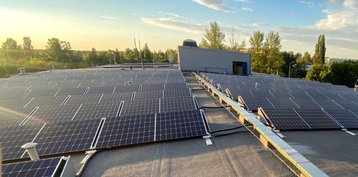Orange has installed solar panels at two of its data center sites in Poland.
“We have just launched photovoltaic installations at the Data Processing Center in Łódź with a capacity of 370 kWp,” the company said this week. “This will cover approx. two percent of the annual energy demand of the entire facility.”
Orange said the deployment consists of two parts: ground and roof. The panels have been in operation since last week; in the first two days of operation, the installation produced 3.2 MWh of electricity and estimated to produce 350 MWh of green energy per year.
The company acquired the solar panels via a lease model, signing a 20-year deal with Green Mobile Polska.
“Such a model of cooperation allows you to save on energy from the first day of commissioning, without incurring large investments,” Orange said.
The news follows an announcement in August that Orange had signed a contract for the installation of solar panels on the roof of the Warsaw Data Hub in Łazy, that will produce approximately 275 MWh of energy annually. Like with Łódź, the panels are being acquired on a 20-year lease, though from Columbus Energy SA; the installation will have a capacity of 331 kWp.
In January, Orange signed a 36MW wind Power Purchase Agreement (PPA) in Poland with Enertrag. This was the second corporate PPA signed by Orange Polska; two installations are already operating in Wielkopolska, covering around 9 percent of the company's annual energy demand.
Last year Orange launched a €50 million ($56.3m) carbon fund to finance reforestation and ecological restoration projects. Last year the company signed solar PPAs in France with Total and Engie totaling more than 130MW.
In the Ivory Coast, Orange Services Group (GOS) recently selected Engie to develop a new 355 kWp solar power plant in Abidjan to contribute renewable power to its data center in the city. The plant will provide around 30 percent of the 1.3MW facility's energy needs.
Earlier this month, Orange outlined several energy-saving measures as the French telecoms giant looks to combat the ongoing energy crisis that is set to grip Europe this winter. It is looking to reduce five to 10 percent of its instantaneous electricity consumption for one hour per day.
More in Sustainability
-

-

Sponsored Staying power
-




